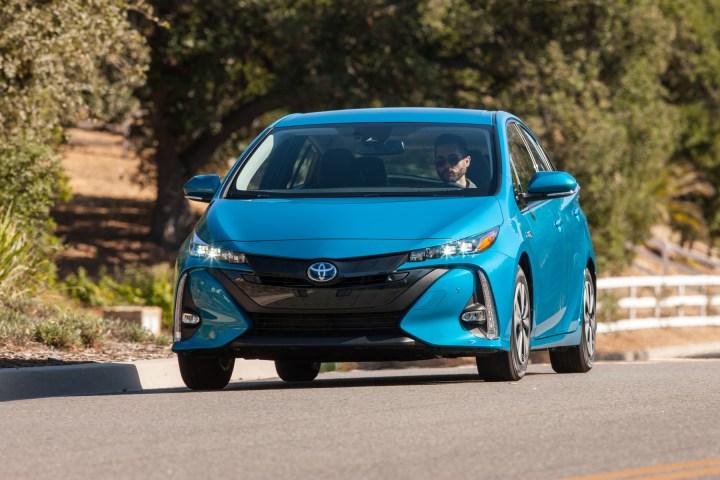
Efficient, smart, and reliable, the Toyota Prius Prime has been one of our favorite hybrid cars since it went on sale in 2016. It’s not perfect, but Toyota is finally fixing its two biggest downsides by carving out more space for passengers, and by adding useful connectivity features. The updated Prius Prime will begin to arrive in showrooms during the 2020 model year.
Toyota focused on the interior during this round of updates. It notably added a more spacious rear bench to make the Prius Prime a five-seater. Its overall dimensions haven’t changed, so we wouldn’t want to fit three XL-sized adults in the back, but the additional rear seat makes the Prius considerably more practical for motorists who occasionally carry four passengers, or who have children. There’s no word yet on whether going from four seats to five has an effect on cargo capacity.
As an incentive to sit in the back, Toyota placed two additional USB ports within the reach of the rear passengers. Up front, motorists will finally be able to enjoy Apple CarPlay. The Japanese automaker firmly refused to offer the feature for years, but it finally caved, and CarPlay is gradually appearing in a growing list of Toyota models. Amazon Alexa compatibility comes standard, too. Android users are out of luck for the time being, but that could change soon. Several Toyota models (including the redesigned Tacoma) are gaining Android Auto compatibility for the 2020 model year.
There are no visual changes to report, for better or worse, so the Prius remains as polarizing as ever. Similarly, Toyota hasn’t made any updates beneath the sheet metal. The Prime still uses a 1.8-liter, four-cylinder engine that works jointly with an electric motor linked to an 8.8-kilowatt-hour lithium-ion battery pack. The system’s total output checks in at 121 horsepower, and the Prime returns an EPA-estimated 54 mpg in a combined cycle.
With a full tank of gas and a full battery, Toyota’s fuel-sipper offers a 640-mile driving range; in other words, you can drive it from New York City to Detroit without stopping, and still have a little bit of fuel left in the tank. Its electric-only range checks in at up to 25 miles.
The 2020 Toyota Prius Prime will go on sale in the summer of 2019. The Japanese firm has renamed the three available trim levels LE, XLE, and Limited, respectively, but pricing stays relatively flat. Plan on spending $27,600 for the base LE model, $29,500 for the midrange XLE, and $33,500 for the range-topping Limited.
Editors' Recommendations
- Toyota joins ‘the Tesla plug’ club
- 2023 Toyota Sequoia supersizes hybrid tech
- Apple rumored to finally be fixing the iPad Pro’s biggest design flaw
- 2021 Toyota Highlander vs. 2020 Ford Explorer
- Toyota RAV4 vs. Honda CR-V: The differences and the similarities




